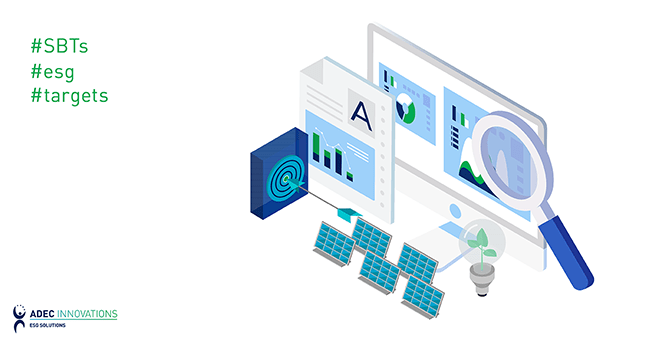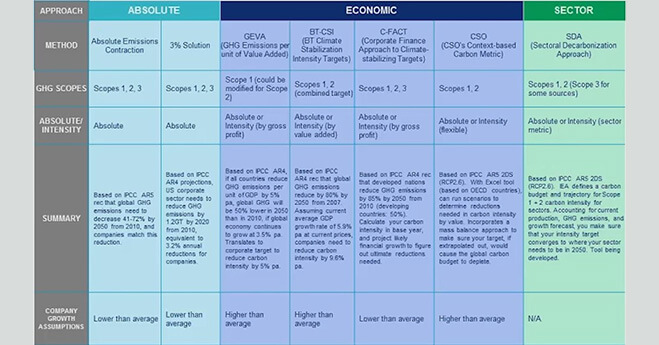Steps to Developing a Science-Based Target

As global regulations and supplier requirements for climate disclosure and action increase, more companies are looking to set and commit to science-based targets. In this blog, we will explore how to set science-based targets in line with a 1.5°C future.
Turning Corporate GHG Inventory Data into Action: Identifying Key Net Zero Strategies

Your company has reported its greenhouse gas emissions and is considering committing to a science-based target. Now what? We will walk through how to use your inventory data to identify net-zero strategies and reduce emissions, turning data into evidence-based action.
Setting Science-Based Targets: SBTi’s Framework for Financial Institutions

The Science Based Target initiative recently released the pilot version of its sector development framework for financial institutions early this month. Keep reading to learn how it may affect your organization and what you can do to stay on top of developments.
Absolute vs Intensity: How Are You Setting Science-Based Targets?

How can setting science-based targets help your business reduce its climate impacts and demonstrate a commitment to sustainability?
Setting Science-Based Targets

In our previous blog post, we discussed what science-based targets are. Now we explore how to set science-based targets. In 2015, 195 countries came together to develop the landmark Paris Climate Agreement, which commits its signatories to take action that will prevent average global temperatures from increasing by more than 2°C above pre-industrial levels. This is a considerable challenge. Government commitments to reduce emissions are crucial. To meet the targets set in Paris, cities and companies must also make drastic reductions to their emissions.
What are Science-Based Targets?

In 2015, 195 countries came together to develop the landmark Paris Climate Agreement, which commits its signatories to take action that will prevent average global temperatures from increasing by more than 2°C above pre-industrial levels. This is a considerable challenge. Government commitments to reduce emissions are crucial. To meet the targets set in Paris, cities and companies must also make drastic reductions to their emissions.
Science Based Targets Webinar: Key Takeaways for Your Emissions Reduction or Decarbonization Strategy

ADEC Innovations (ADEC) hosted a webinar on Science Based Targets (SBT), a joint project of CDP, the UN Global Compact (UNGC), the World Resources Institute (WRI) and the World Wildlife Fund (WWF) for corporate decarbonization strategies.
What are Science Based Targets?

One of the key goals of the Paris Agreement is to limit global warming to less than 2°C compared to pre-industrial temperatures.
Why You Need Science Based Targets

Companies that pursue sustainability are quickly committing to the Science Based Targets Initiative. What is it, exactly? A joint initiative by CDP, the UN Global Compact (UNGC), the World Resources Institute (WRI) and the World Wildlife Fund for Nature (WWF), the Science Based Targets Initiative aims to boost corporate action on greenhouse gas (GHG) emissions.
Setting Emissions Reduction Targets within the Corporate Sector – Part 2

Check out Part 1 of this series if you missed it! What is a science-based target?
Setting Emissions Reduction Targets within the Corporate Sector – Part 1

According to CDP, more than 80% of the world’s 500 largest companies established emissions reduction or energy-specific targets in the 2014-2015 fiscal year.